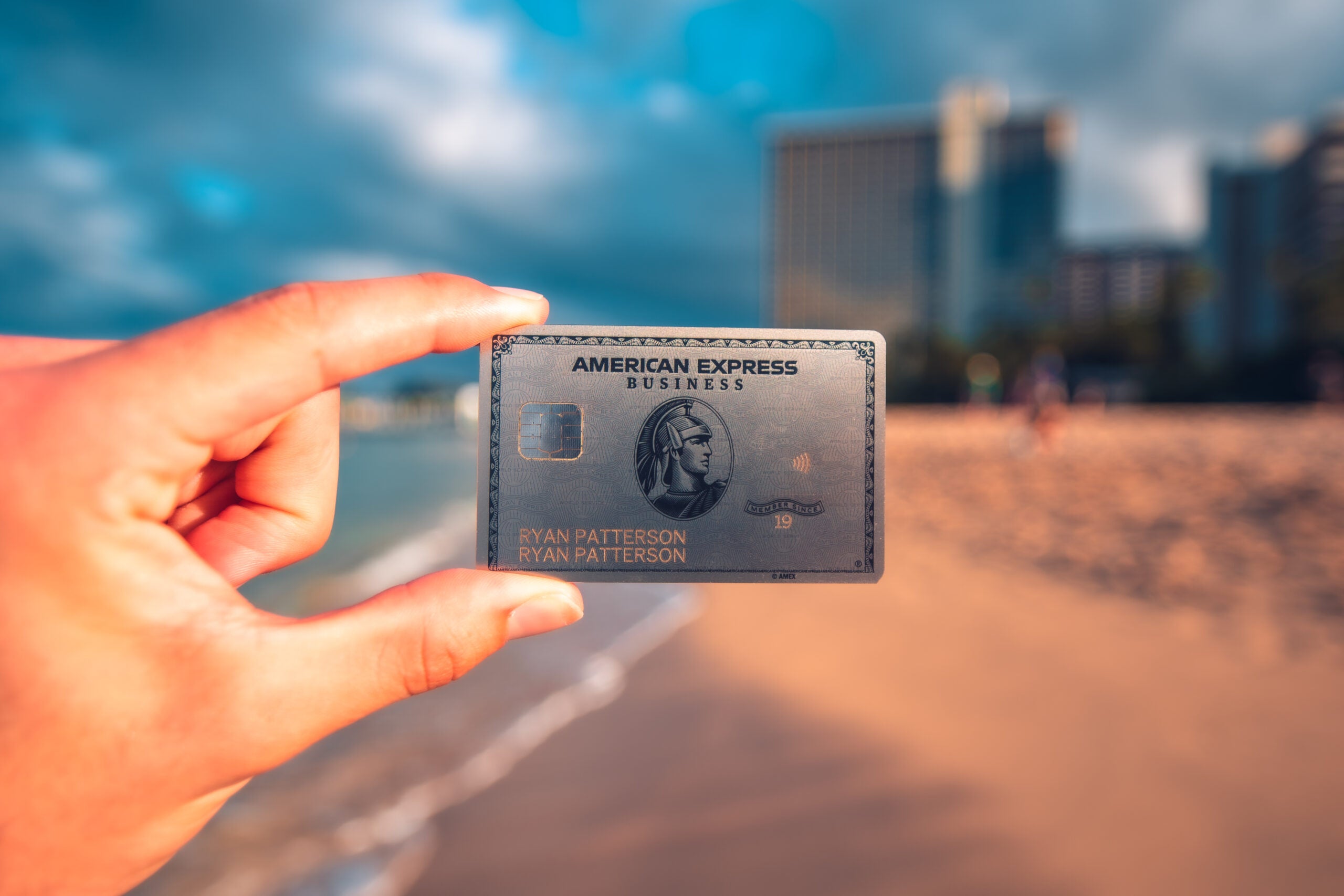Editor’s note: This post has been updated with the latest information.
Higher education costs have been steadily increasing over the last two decades, making tuition a sizable expense for many families.
New to The Points Guy? Sign up for our daily newsletter and check out our beginner’s guide.
While many colleges and universities accept credit cards for these payments, it isn’t always free to do so. If you’re responsible for tuition payment, should you pull out your trusted rewards credit card, opt for paying with a check or withdrawal from your bank account? In this post, we’ll help you answer that very question.
Related: How to maximize points on first-year college essentials
In This Post
How to find out if a college accepts credit cards
Before getting into when it makes sense — and when it doesn’t make sense — to swipe your card for your kid’s tuition payment, it’s important for you to first do your research. Is this even an option? If so, are there fees associated with it? A quick call to the finance office or registrar should do the trick, though many will post details of their payment options online as well.
If you type “(Insert college name here) tuition credit card” into Google (or your favorite search engine), you’ll likely see the applicable page in the first few results.
Colleges fall into these categories
Generally speaking, the college or university in question will fall into one of three categories:
- Tuition can’t be paid with a credit card (such as my undergraduate alma mater, Wake Forest University)
- Tuition can be paid with a credit card with no additional fee (such as the University of Nevada – Las Vegas, from which I obtained my M.Ed.)
- Tuition can be paid with a credit card with an additional fee (such as the 2.6% fee charged by the University of Florida, where I earned my M.B.A.)
- The first two options are a no-brainer. If you can’t use a card at all, you’re out of luck. Several institutions impose these restrictions.
Related: How to pay your student loans with a credit card
Universities that don’t charge card processing fees
On the other hand, if you can pay your tuition with a credit card and not incur an additional service fee, then you absolutely should do it — and be grateful that you can!
Just be sure that you can pay off the entire amount when your statement comes due, which is my number one commandment for credit cards. If you can’t and must carry a balance, any interest and finance charges will easily cancel out the points or miles you’d earn on the purchase.
Unfortunately, the number of schools that fall into this second category is relatively small. In fact, I went through U.S. News & World Reports’ list of the top 100 national universities in the country and found only five that allow no-fee credit card payments for tuition:
- State University of New York (SUNY) – Binghamton
- SUNY – Stony Brook
- SUNY – College of Environmental Science and Forestry
- SUNY – Buffalo
Note: It appears that most, if not all, state universities in New York don’t charge fees for paying with a card, so if you’re looking at or already attend one of these schools, you’re in luck!
There are other exceptions I found for certain classes of students. For example, part-time students at Boston University can pay via credit card with no fee, as can most graduate students at Northeastern.
Paying a fee for using a credit card
Where things get more complicated is the third category. Of the top national universities, 65 allow payments with fees that range from 2% (Penn State University) to 2.99% (Brandeis University).
So, should you incur a fee to pay college tuition with a credit card? As is the case with much of what we cover here at The Points Guy, the answer isn’t absolute: “Yes, but only in certain circumstances.”
Let’s take a look at where it would make sense.
It makes sense to earn a sign-up bonus

The first scenario under which you should consider paying tuition with a credit card involves credit card welcome bonuses. Many top travel rewards credit cards offer large amounts of points or miles for reaching a certain level of spending in a given timeframe.
Related: Cards with 100,000-point sign-up bonuses or higher
In some cases, your normal spending may not be enough to get you there. If the only possible way of meeting the required minimum spending threshold to earn a bonus is to incur a fee on tuition payments, it could make sense to do so.
Doing the math with an example
For example, let’s say that you were interested in the Chase Sapphire Preferred Card and its best-ever sign-up bonus of 100,000 points. You’d earn 100,000 bonus Ultimate Rewards points after you spend $4,000 on purchases within the first three months of account opening.
Based on TPG’s most recent valuations, this offer is worth $2,000. Depending on your spending habits, you may or may not be able to reach this spending threshold on your everyday purchases. Since we’re approaching the new school year — and tuition payments are right around the corner — you may wonder if you should pay with your new Chase Sapphire Preferred to lock in the sign-up bonus and thousands of points on top of that.
If the tuition payment in question is $20,000 and your university charges a 2.6% fee, this would tack on an additional $520 in fees. However, in doing so, you’d earn the 100,000-point offer, plus 16,520 points for the purchase itself (at the standard earning rate of 1 point per dollar spent). These 116,520 Avios are worth $2,330.40 according to TPG’s valuations — substantially more than covering the fee charged by the university.
Related: Reasons why the Chase Sapphire Preferred should be your first card
Once again, this logic only applies if you have no other way to spend the required amount to earn the sign-up bonus. If you can reach that threshold in other (fee-free) ways, you’re much better off doing that and using a different method to pay the tuition that won’t incur a fee.
It makes sense to earn more valuable points

Another time you should consider swiping a card for tuition is when the points or miles you’d earn are more valuable than the fees you’ll incur. This is a very gray area since everyone has their own way of valuing the various loyalty currencies out there.
A good place to start is our monthly valuations to get a ballpark of how much you can get out of your points and miles. However, keep in mind that these valuations typically apply to redeeming points for maximum value, especially when it comes to transferable point currencies, so the math may not make sense if you redeem your points directly.
Here are a couple of examples of when the points or miles you’d earn would outweigh the additional fee:
- Chase Freedom Unlimited: This card offers 1.5% cash back on all purchases, but if you also hold a “premium” card such as the Chase Sapphire Reserve, you can convert those cash-back earnings into full Ultimate Rewards points. This is the equivalent of earning 1.5 points per dollar spent on every purchase. Since TPG values Ultimate Rewards points at 2 cents apiece, you’re essentially getting a return of 3%. If the fee for using a credit card for tuition is less than this amount, you’ll come out ahead by using your Chase Freedom Unlimited.
- The Business Platinum Card® from American Express: This may seem strange on the surface since the Amex Business Platinum only offers 1 Membership Rewards point per dollar spent. However, it also gives you 50% more points on purchases of $5,000 or more (up to 1 million additional points per calendar year), so if your tuition payment is more than $5,000, you’ll earn 1.5 points per dollar spent. TPG pegs Membership Rewards points at 2 cents apiece, so you’d get a return of 3%. Again, if the fee for using a card is less than this, go ahead and swipe the card. Terms apply. As always, be sure to adjust these numbers based on your own valuations and evaluate your school’s credit card payment policy to determine whether it makes sense to incur the fee.
As always, be sure to adjust these numbers based on your own valuations and evaluate your school’s credit card payment policy to determine whether it makes sense to incur the fee.
It makes sense to use an intro APR offer
The final time it makes sense to incur a fee on a credit card for tuition is decidedly less glamorous but nonetheless important.
With the price of higher education so high, many parents aren’t able to cover a full semester’s tuition with cash in the bank or the money in a college fund. As a result, financial aid packages have become ubiquitous, with roughly 86% of college students receiving some form of aid. However, student loans often come with high interest rates.
This is where a new credit card with an introductory 0% APR offer can come into play. These cards will generally allow you an initial “grace period” in which to pay off your purchases with no interest before they become subject to standard rates.
Related: The best balance transfer credit cards
This can be a great option if you’ve exhausted the funds in a 529 college savings plan, don’t want your kids to be saddled with student debt and can finish paying off the entire balance before the promotional period ends. Bear in mind that these purchases are still eligible to earn points or miles too.
Once again, let me reiterate that you must be able to pay off the full balance before the promotional period ends. Otherwise, you’ll be subject to an APR that is much higher than the rate you’d get on just about any loan.
Related: The complete guide to earning points with Plastiq
Bottom line
Whether you’re just getting started or are a grizzled points and miles veteran, you’re hopefully looking for any way to maximize your daily spending through travel rewards credit cards.
Around this time of year, these efforts inevitably shift towards college tuition payments, though individual institutions may charge you for the privilege of swiping your favorite brand of plastic (or may prevent you from doing so entirely). If you’ll incur a fee for using a card, there may be instances where it makes sense, and I hope this post has helped illustrate exactly when that’s the case.
Related: TPG’s beginner’s guide to credit cards: Everything you need to know
Additional reporting by Stella Shon.
For rates and fees of the Amex Platinum Business, click here.
Featured photo by Justin Lewis for Getty Images.
